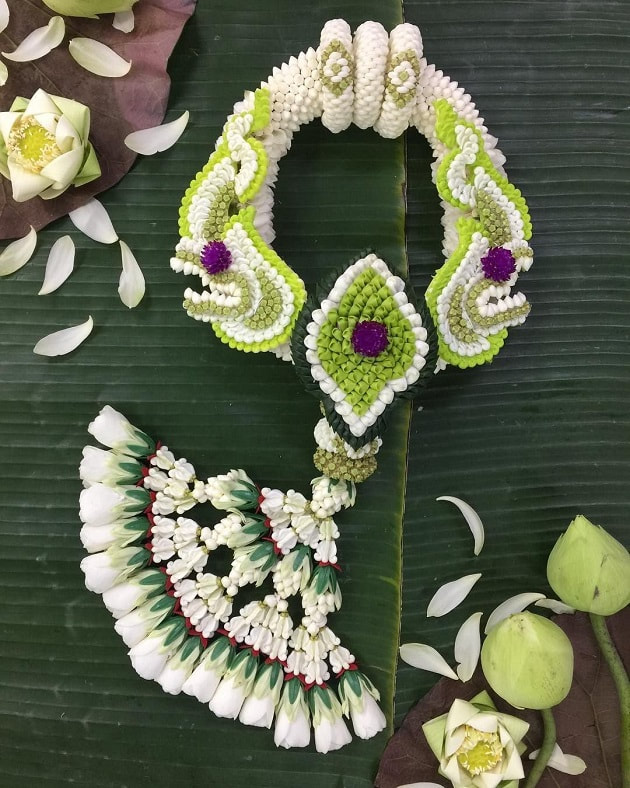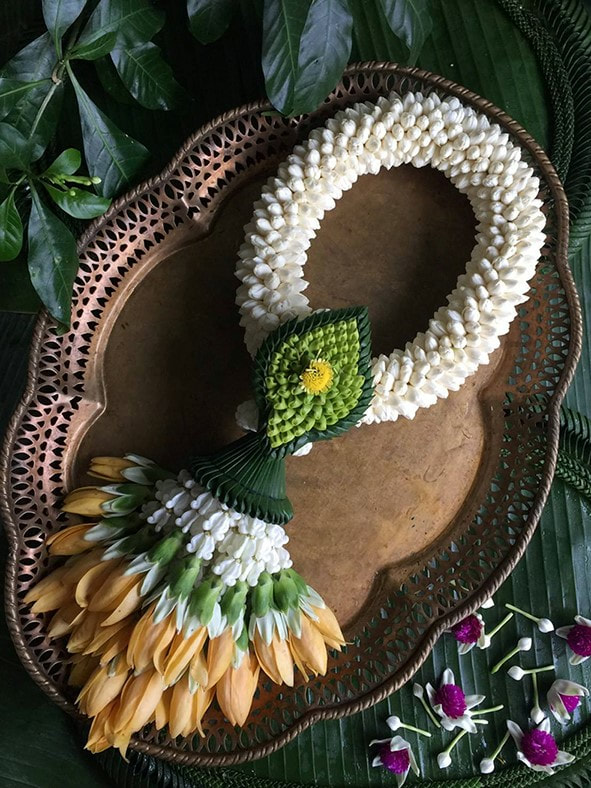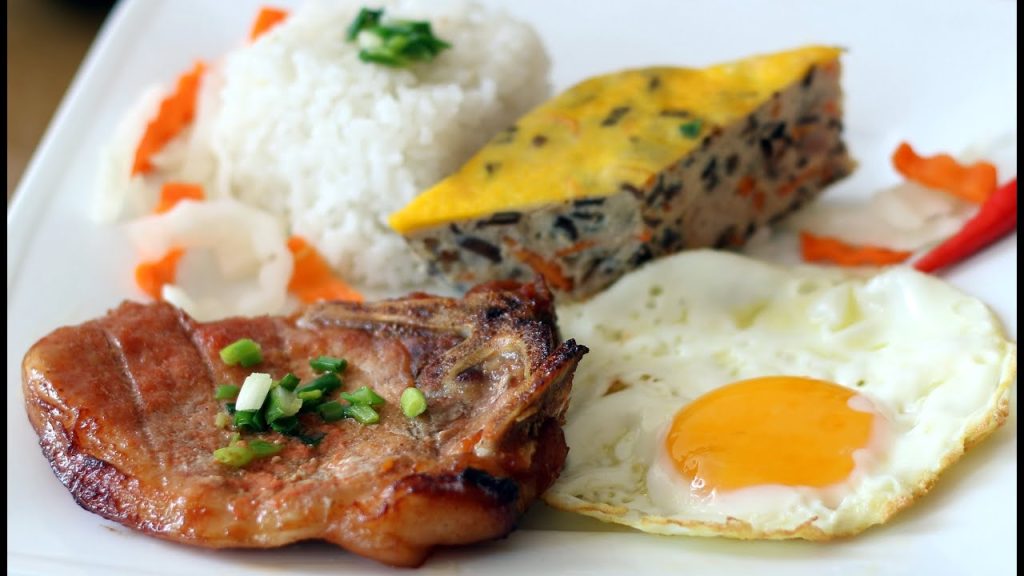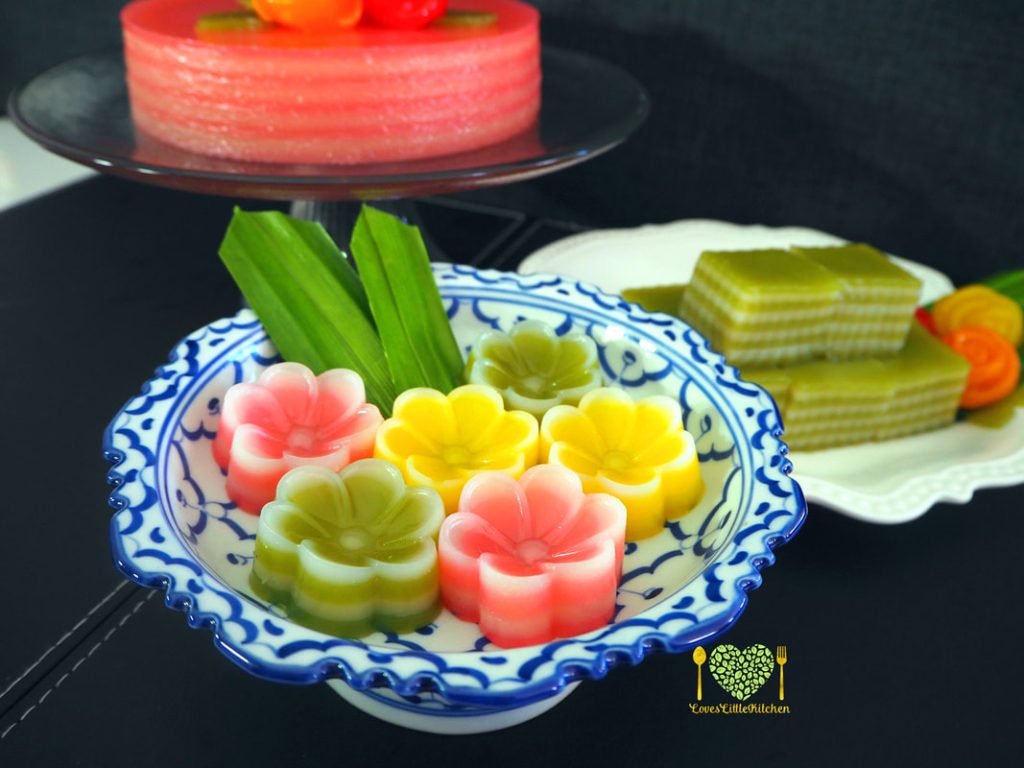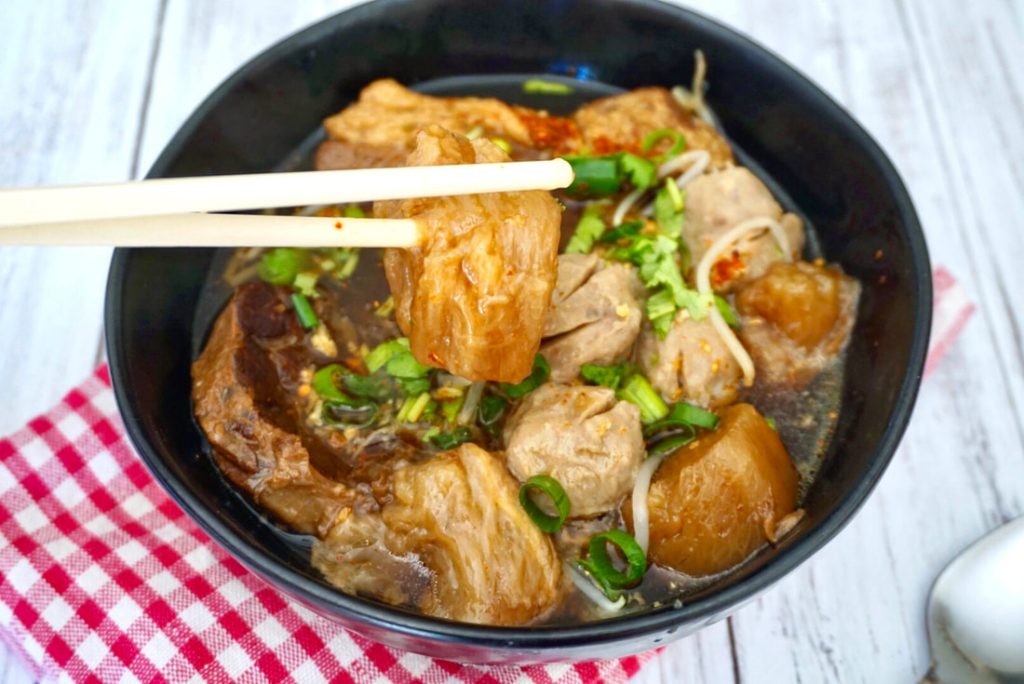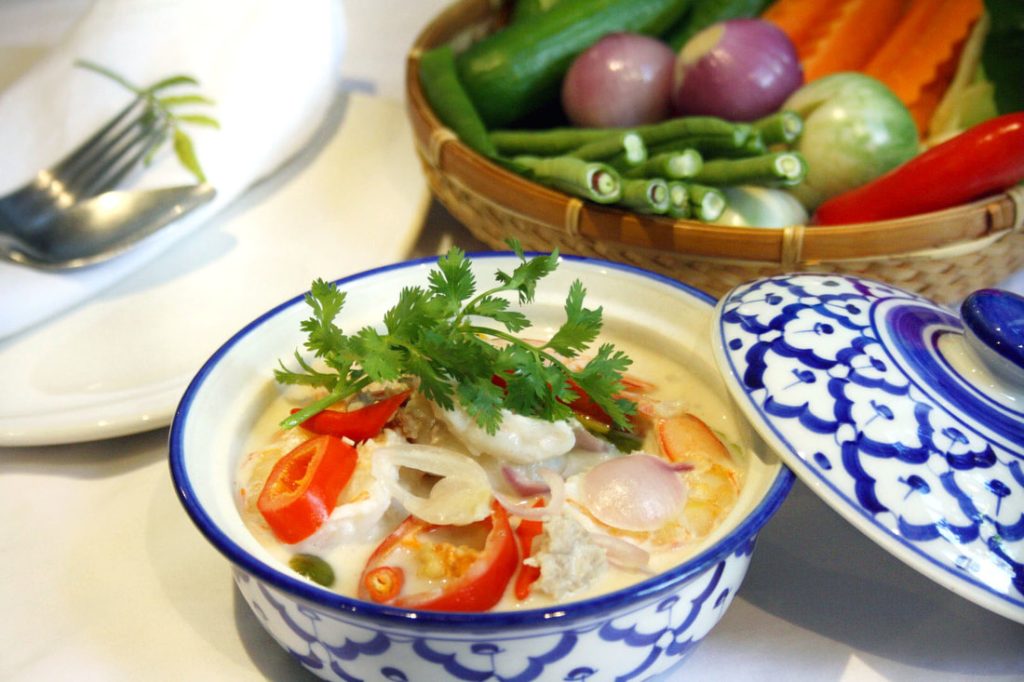My grandmother taught me that we shouldn’t smell the Thai garland if it is a gift that you will offer to others. This rule was strictly enforced, especially when the garland was made for offering to Buddhas image or to monks – Parita Nobthai of @thecrafthumpy
My grandmother taught me that we shouldn’t smell the Thai garland if it is a gift that you will offer to others. This rule was strictly enforced, especially when the garland was made for offering to Buddhas image or to monks.
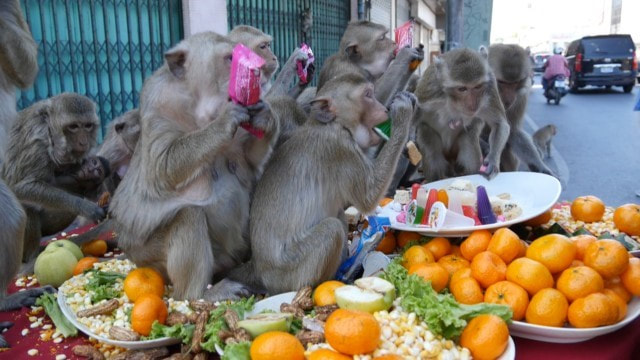
What flowers are used for making Thai Traditional Garland
If I talk about Phuang Malai and forget to talk about the Thai flowers that are commonly used to make it, I will have missed out a really important part of its design. “Malai” means flower and “Phuang” means garland, “Phuang Malai” is a bunch of flowers however, this bunch of flowers is arranged in a special way. Some artists might call it a “deconstruction of flowers”, as the maker uses each individual flower bud, petal, sepal, stem or leaf to recreate a new specific form. It is different from the western style flower arrangement, which focuses more on the natural beauty of each flower and attempts to keep the natural form as original as possible.
“The origin of Phuang Malai dates back over two hundred years to the reign of King Rama V when flower arranging was a skill practiced by ladies of the royal court.” (Royal Thai Embassy Mexico, 2015). Long ago, flowers and leaves used in Phuang Malai crafting were simply found around the house. Flowers such as Jasmine, Gardenia Crape Jasmine, crown flower, Marigold, roses, orchid, Champak, White Champak, Globe Amarath, tamarind, Croton, Orange Jasmine leaves were all used to add uniqueness to each one.
The use of Dok Ruk or crown flower is a must for making Phuang Malai considering its outstanding form, longer shelf life and its positive meaning. “Ruk” means love in Thai language and “Dok” means flower so “Dok Ruk” simply means a flower of love. Other flower like Jasmine is also popular because of its scent however, Jasmine doesn’t last long as it quickly turns brown within a few days.
“Phuang Malai” and Thai wedding ceremonies
There are different variations of Phuang Malai dependent on the occasions. Such occasions can include making an offering to monks, to seniors, as a souvenir, to a bride and groom at their wedding, as a hair accessory for Thai dancing, for home decorations and for religious ceremonies.
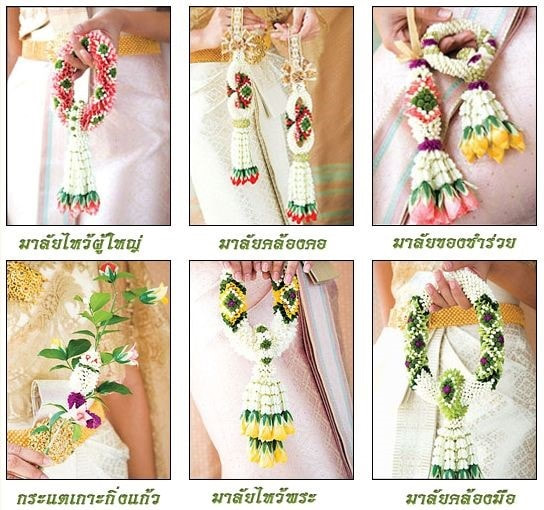
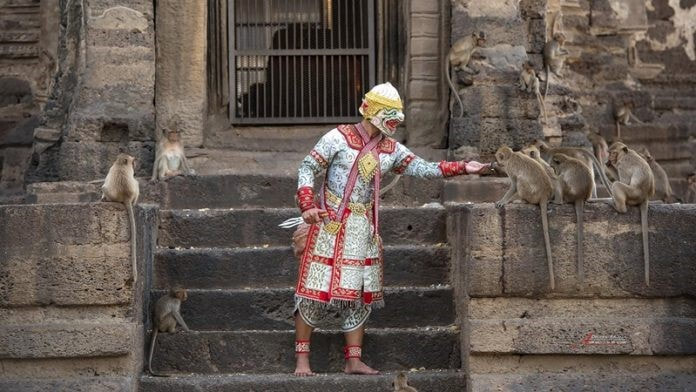
Wedding Thai garland, double-tail garland or “Phuang Malai Song Chai” is commonly seen at Thai traditional weddings and the same garland from the morning ceremony will be used again for the wedding reception. It is believed that bride and groom who uses the same garland in both ceremonies will have a long marriage and will be together forever. “Song” means two and “Chai” in this context means tail, the two tails of the Thai garland are joined by gold-embroiled ribbon. The bride and groom’s parents as well as older couples who have had a long marriage will offer wedding garlands to the bride and groom.
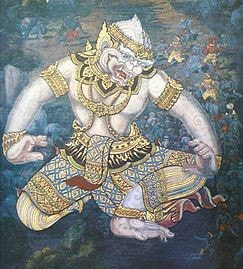
After the ceremony, many couples frame their wedding Malai with their marriage certificate while others keep it on a tray atop a pedestal. These are displayed at their new home to remind the couple of the new beginning of their married life together.
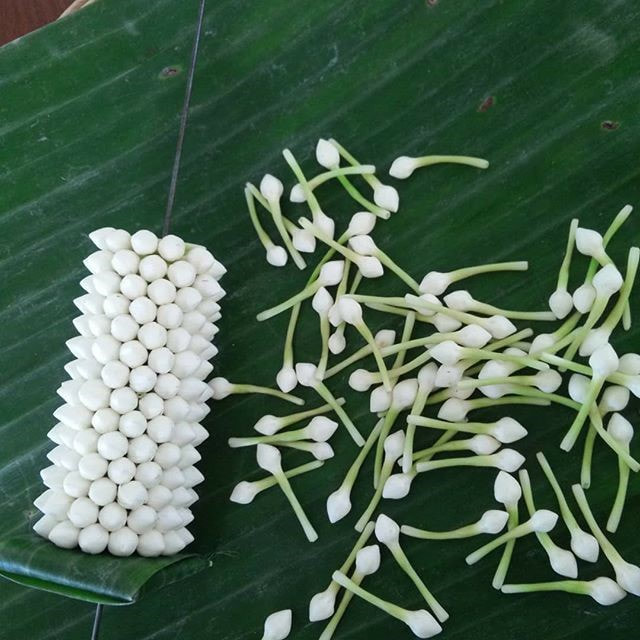
What is single-tail garland?
The basic Thai garland with single tail has three different components; first the main circular-shaped part made as a bracelet commonly uses Gardenia Crape Jasmine or Jasmine, Uba or the tail made from crown flowers, roses, deconstructed rose petals or Champak, and the last part is decoration which commonly used semi-circular shaped Thai garland to garnish or hide the connection between circular-shaped garland and Uba.
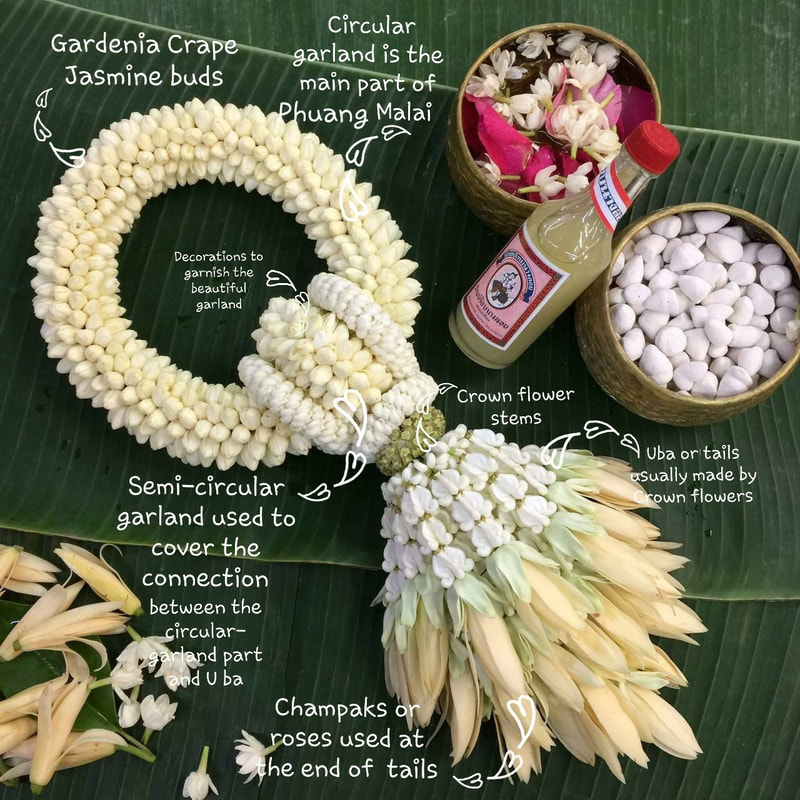
There are three things to be considered when making a beautiful Malai
1. Size of flower, the more similar in size the flowers are, the more beautiful the Malai
2. Pattern and consistency, making each Malai require an eye for detail and the consistency of pattern. Gaps between each flower need to be the same.
3. A gentle mind and touch are important, especially when working with fresh flowers. Be gentle and patient to avoid bruising the petals of flowers.
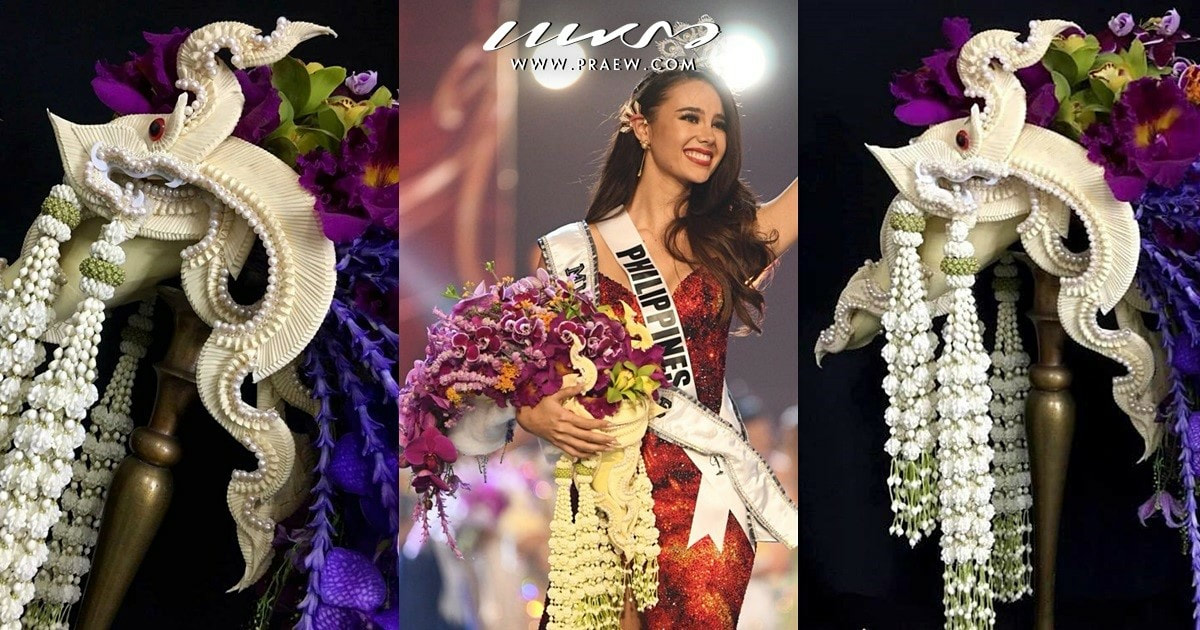
“a homely place where you can get beautiful handcrafted gifts directly from the maker”

References
http://5600310com226.blogspot.com/p/blog-page_12.html
http://9choke.com/2016/04/27/พิพิธภัณฑ์วัฒนธรรมดอกไ/
https://www.facebook.com/TheMuseumofFloralCulture/
http://www.maliii.com/category/11/พวงมาลัยแบบพิเศษ
https://garlandmag.com/
www.thailatinamerica.net/mexico/
www.thailand-guide.com
www.sirinyas-thailand.de/2015/09/12/phuang-malai-thai-floral-garlands
www.thaisabai.org/2012/07/how-to-make-a-thai-flower-garland


